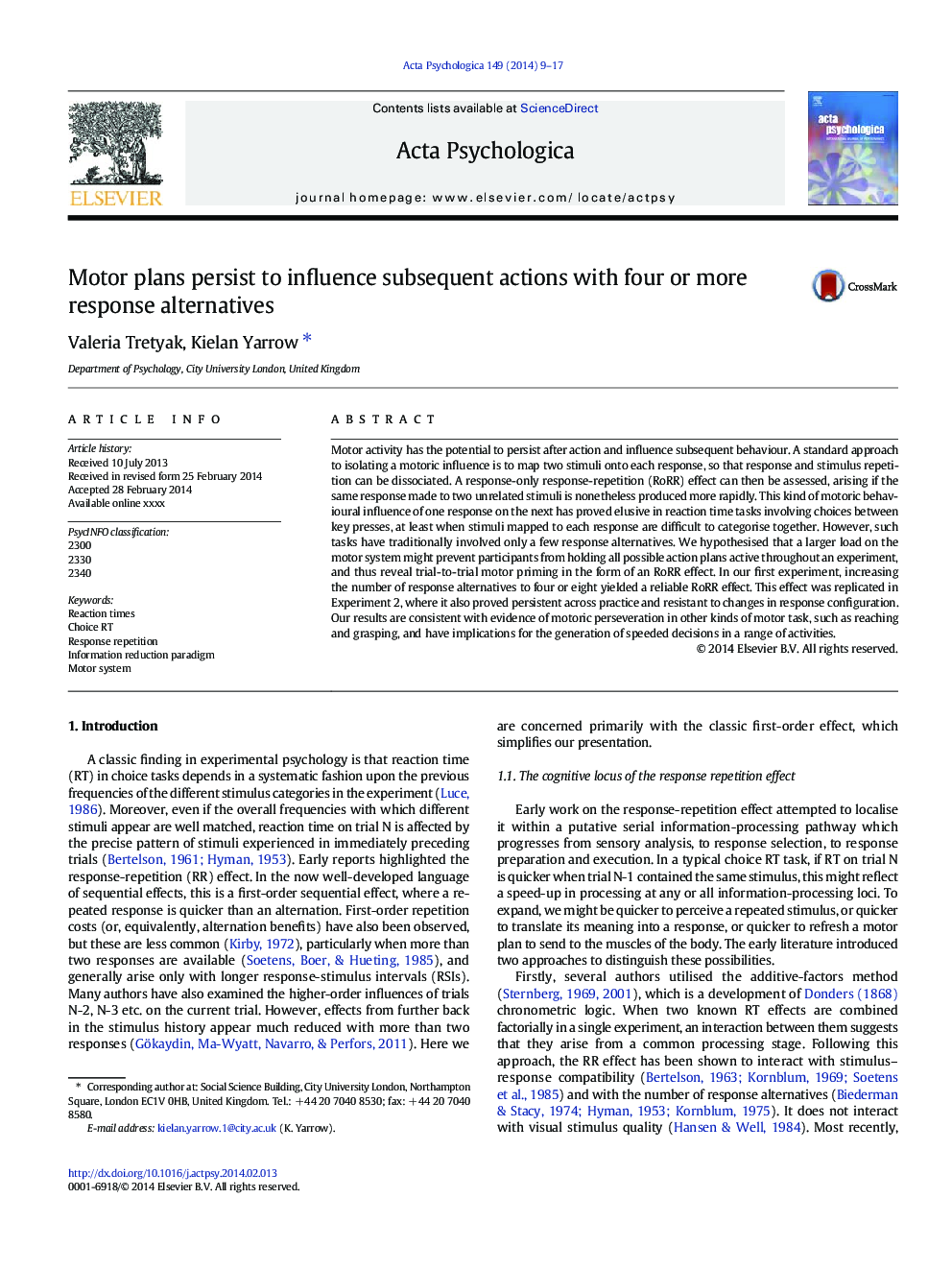| Article ID | Journal | Published Year | Pages | File Type |
|---|---|---|---|---|
| 7277632 | Acta Psychologica | 2014 | 9 Pages |
Abstract
Motor activity has the potential to persist after action and influence subsequent behaviour. A standard approach to isolating a motoric influence is to map two stimuli onto each response, so that response and stimulus repetition can be dissociated. A response-only response-repetition (RoRR) effect can then be assessed, arising if the same response made to two unrelated stimuli is nonetheless produced more rapidly. This kind of motoric behavioural influence of one response on the next has proved elusive in reaction time tasks involving choices between key presses, at least when stimuli mapped to each response are difficult to categorise together. However, such tasks have traditionally involved only a few response alternatives. We hypothesised that a larger load on the motor system might prevent participants from holding all possible action plans active throughout an experiment, and thus reveal trial-to-trial motor priming in the form of an RoRR effect. In our first experiment, increasing the number of response alternatives to four or eight yielded a reliable RoRR effect. This effect was replicated in Experiment 2, where it also proved persistent across practice and resistant to changes in response configuration. Our results are consistent with evidence of motoric perseveration in other kinds of motor task, such as reaching and grasping, and have implications for the generation of speeded decisions in a range of activities.
Related Topics
Life Sciences
Neuroscience
Cognitive Neuroscience
Authors
Valeria Tretyak, Kielan Yarrow,
